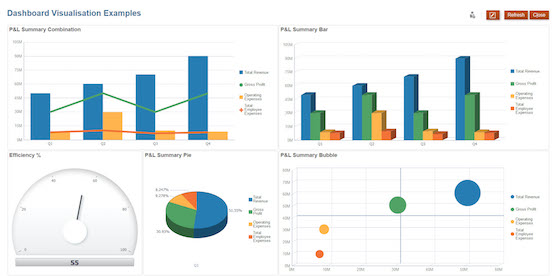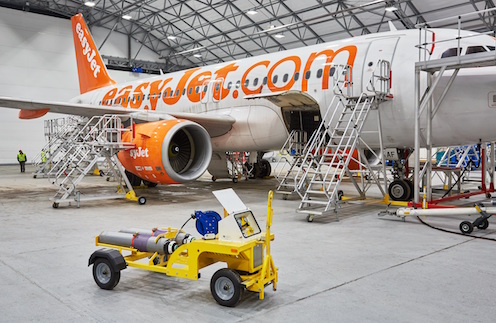
If you’re really looking to drive your business forward, start with culture. All companies have it, but many are unaware. Could you define yours?
Clan culture
Otherwise known as family culture, clan culture is friendly, upbeat and made up of employees who have a lot in common with each other. The task of building and maintaining a strong company culture consistently stands as a top priority along with focusing on employee wellbeing.
Leaders of clan cultures are hugely respected and are often perceived as mentors or father figures. These leaders drive team building, employee involvement and empowerment. Business goals and company values are commonly shared by employees across the organisation, resulting in one - streamlined - universal vision, which employees want to invest in.
However, adopting a clan culture can prove risky if you don’t trust your team. There’s a fine line between communicating enough and over-collaboration. Likewise, the adverse effect of individualism and a more ‘laissez-faire’ attitude can make it difficult for inexperienced managers to keep control. To fully reap the benefits of a clan culture, set boundaries and make sure your employee contracts include the company’s grievance procedures in black and white.
Uploading this to an all-can-access cloud-based software like our very own, means that employees know where they stand, wherever they are.
Adhocracy culture
Adhocracy culture revolves around innovation, success and flexibility. This type of culture is often found within modern industries such as aerospace and technology. Assuming that all of their products have a limited shelf-life, adhocracy cultures constantly plan to stay ahead of the competition.
The office environment is typically creative, energetic and fast paced. Leaders of adhocracy culture are true entrepreneurs; they consistently encourage risks and push employees to experiment with new ideas. Adapting quickly to changing conditions is the norm in an adhocracy culture. This ensures that companies stay up to date with the latest trends.
Working in an intense and fast-paced environment can take its toll. Employees may find the atmosphere in the office chaotic, disorganised and they could struggle to clearly understand their responsibilities. That’s not to mention the financial implications if risks and experiments fail.
Market culture
And then there’s market culture. Gaining popularity in the 1960s, market culture is ruthless, strongly results driven and performance orientated. Employees are encouraged to set difficult goals for themselves and work hard to achieve them, with leaders tough and demanding. Market share and profit are always at the forefront of the business focus.
While building a market culture brings benefits for business health - optimised return rates, overtaking competitors and high employee motivation and engagement – this is not without its downfalls. Which can be pretty big.
With employees pushed on a daily basis to maximise their performance and hit difficult targets, the competitiveness can lead to dishonesty and conflict in the office, which you as an employer will need to deal with. Team members are disconnected, popularity decreases and the business suffers financial loss.
Our employee objectives and deliverables feature helps manage employee growth and development by breaking targets down into achievable tasks.
Hierarchy culture
Hierarchy culture – the traditional type of culture - revolves around structure, control and a tough top-down leadership style. This type of working environment focuses on organisation with well-polished policies and procedures. Keeping the business running smoothly is key.
There are strict rules, with leaders keeping a close eye on their employees. There are several layers of management between leadership and employees - many more than in other cultures - and leaders are highly respected by their teams.
The benefits speak for themselves; there are little or no issues with authority and boundaries are clear. Responsibilities are allocated by job level and communication is seamless.
However, with a tough and back dated - by the book - culture there are drawbacks. With power sitting at the top level of the business, leaders can can become too absorbed in everyday decision making to invest any time in their people. Employee one-to-ones are infrequent (or at all) and appraisals are low on the priority scale.
Your company culture matters
Our research found that poor workplace culture is costing the UK economy a staggering £23.6 billion a year, due to low productivity and poor employee retention.
The truth is, whichever culture you decide to adopt, neither top-down nor bottom-up leadership work well as absolutes. Remember that rules sometimes need to bend and that developing a consistent, clear managerial approach is the real route to success.
How to create a great company culture
We’re learning about what it takes to create a great company culture for small business and why it pays to put your people first.
Join us for the first part of The People Project, where we’ll look into Health and Wellbeing best practices for the workplace.
So, if you’re committed to putting people first and developing from within, join The People Project with Breathe.
Subscribe now. (You won’t regret it.)
Try Breathe for FREE today at breathehr.com/surrey-chambers
As a member of Surrey Chamber of Commerce you will receive an exclusive 20% discount





